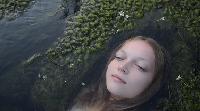Anima Mundi
17.04.2015 - 17.05.2015
Lust Gallery, Wien / Österreich
In the last century, Carl Jung rediscovered the fascination of the alchemical opus and showed how alchemical symbols and images act in the process of inner transformation. The thinker differentiated between two forms of spiritual light: lumen dei, the light proceeding from the spiritual realm of a transcendent God, and lumen naturae, the light hidden in matter and the forces of nature. The Divine Light may be experienced through revelation and spiritual practices that give us access to our transcendent self.... The Light of Nature needs to be released through inner alchemy so that it can work creatively in the world.
“The real mystery does not behave mysteriously or secretively; it speaks a secret language, it adumbrates itself by a variety of images which all indicate its true nature. I am not speaking of a secret personally guarded by someone, with a content known to its possessor, but of a mystery, a matter or circumstance which is “secret,” i.e., known only through vague hints but essentially unknown. The real nature of matter was unknown to the alchemist: he knew it only in hints. In seeking to explore it, he projected the unconscious into the darkness of matter in order to illuminate it. In order to explain the mystery of matter he projected yet another mystery – his own psychic background – into what was to be explained: Obscurum per obscurius, ignotum per ignotius!” (Jung, C. G. (1968). Psychology and Alchemy. London: Routledge.)
Michael Hoepfner’s art practice involves hiking; in the last two years he made four walks in Northern Tibet, a high plateau landscape, called Chang Tang, about 4500 Meters altitude and the size of Western Europe. In this premodern space, the artist encountered either local nomads who survived this harsh climate over centuries or new settlers, coming in from Chinese Provinces to work miners, gold washers etc.
The artist is interested in the radical difference in experiencing and dealing with the landscape in Chang Tang. Not unlike the explorer of the 19th century he observed local people living in tents, in a strange dependency on their yak animals and the very little nature provided... He was particularly interested in the shamanistic practice of calming the forces of nature : building remote settlements for nature ghosts: small cairns - rocks piled up - or what looks like tent architecture but is made of fabrics, flags etc.
[Quelle: Einladung]
- Michael Höpfner
- Sonia Leimer
- Olivier Richon
- Audra Vau
- Vita Zaman - Kurator_in
Kein Ergebnis
- Lust Gallery: „Anima Mundi“. in: Die Presse online. 16.04.2015
Kein Ergebnis
Kein Ergebnis

